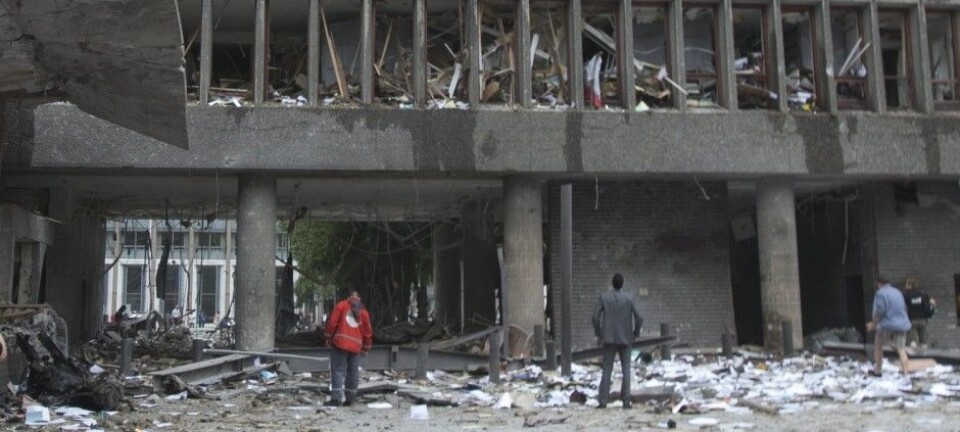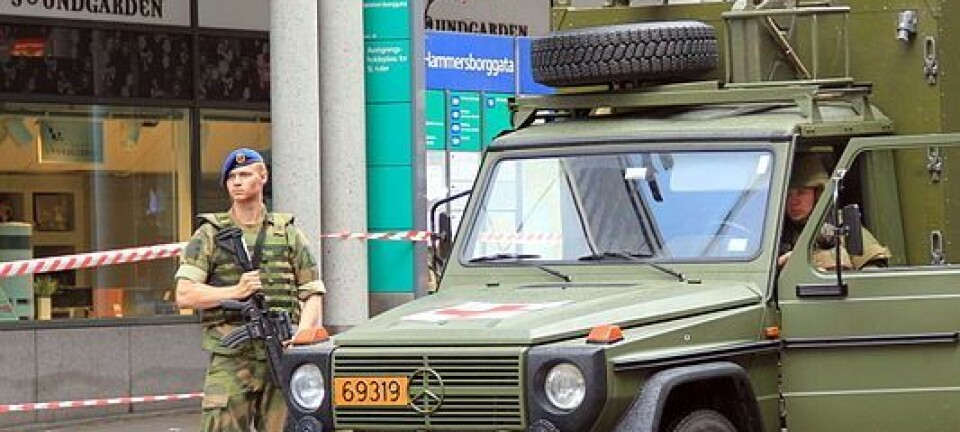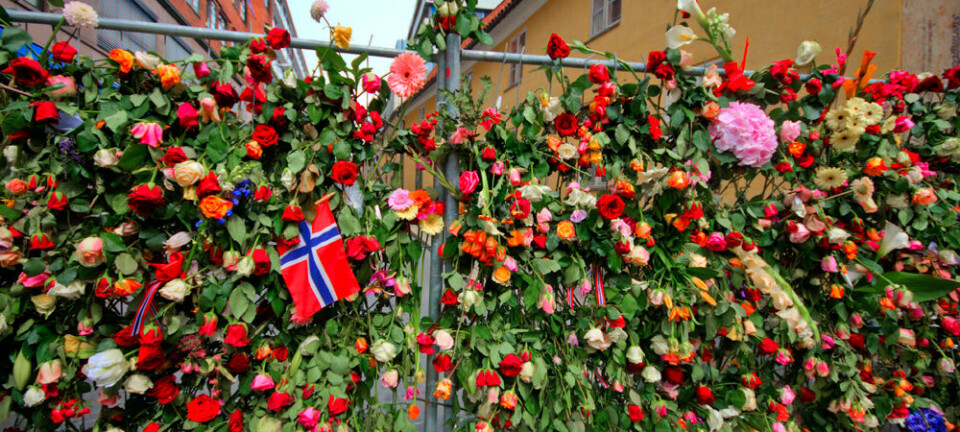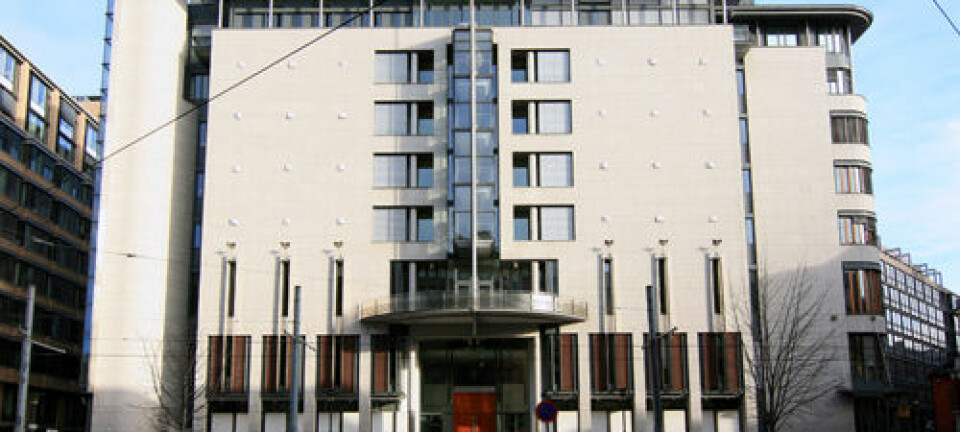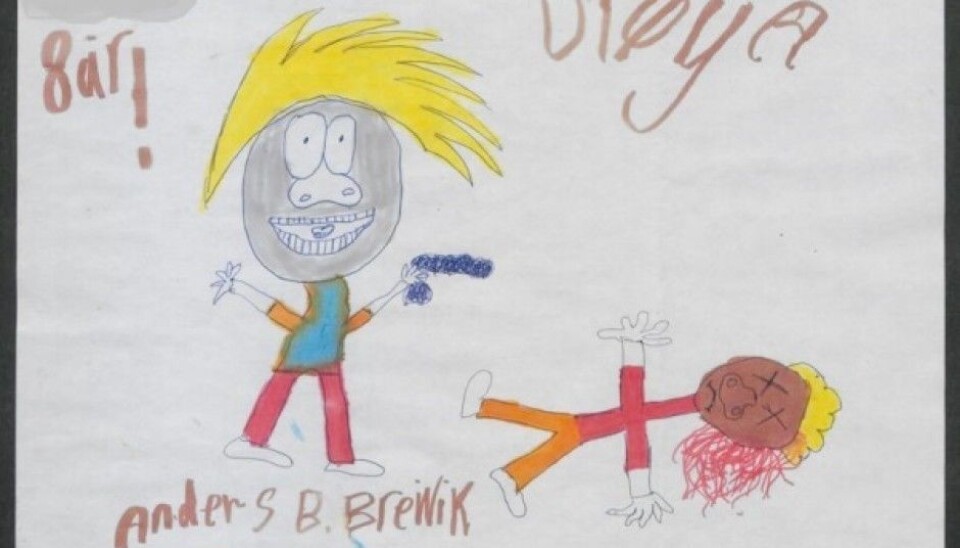
Children have compassion for the terrorist's family
Childrens' drawings after the 2011 terrorist attack in Norway depict love, unity and diversity.
In the hours and days after the 22 July 2011 Oslo bombing of the government quarter and the shooting on Utøya, children and adults began drawing as a way to process the horrifying events. Hearts, Norwegian flags, hand holding, blood, rainbows and a light-haired man with a gun and a smile were recurring themes.
Professor Lied, who teaches in the Faculty of Education and Natural Sciences at Hedmark University College (HiHm), has studied 2700 of the drawings on display outside the cathedral in Oslo and on the Utvika pier, where survivors of the Utøya shooting were brought.
The National Archives Services of Norway has collected and digitized a total of 25,000 of these mementos, which have recently been extensively interpreted and analysed by researchers. Lied says she and her colleagues have looked at the drawings to identify the values that the memento creators considered central and those they perceived as threatened.
Love, unity, diversity—and compassion—shine through
If you want to know something about a society's rituals, beliefs and values, Lied says, you need to observe them when they are put under pressure, or when crises arise. “The July 22nd attack was just such a critical event,” she says.

The thought came to her, “What’s happening here, these shared thoughts, all these drawings – don’t they say something about what values we have?” Her colleague Hans Lödén at Karlstad University in Sweden has simultaneously been studying over 15,000 collected written mementos from the attacks.
According to Lied’s analysis, the drawings show that love, unity and diversity were important values conveyed in the aftermath of 22 July. Lied found that the surprising element here was that many drawings contained not only one, but a combination of all these values.
She was also impressed by how many remembered and showed compassion for the attacker’s family and close friends. “This showed great generosity, and that the sense of unity cast a wide net,” said Lied.
Dehumanizing the perpetrator
Other images show the perpetrator, Anders Behring Breivik. In some he is drawn with a smile and “hahaha” in a speech bubble; in others he is represented as a murderer, a devil or as a monkey saying, “I have a disease”.
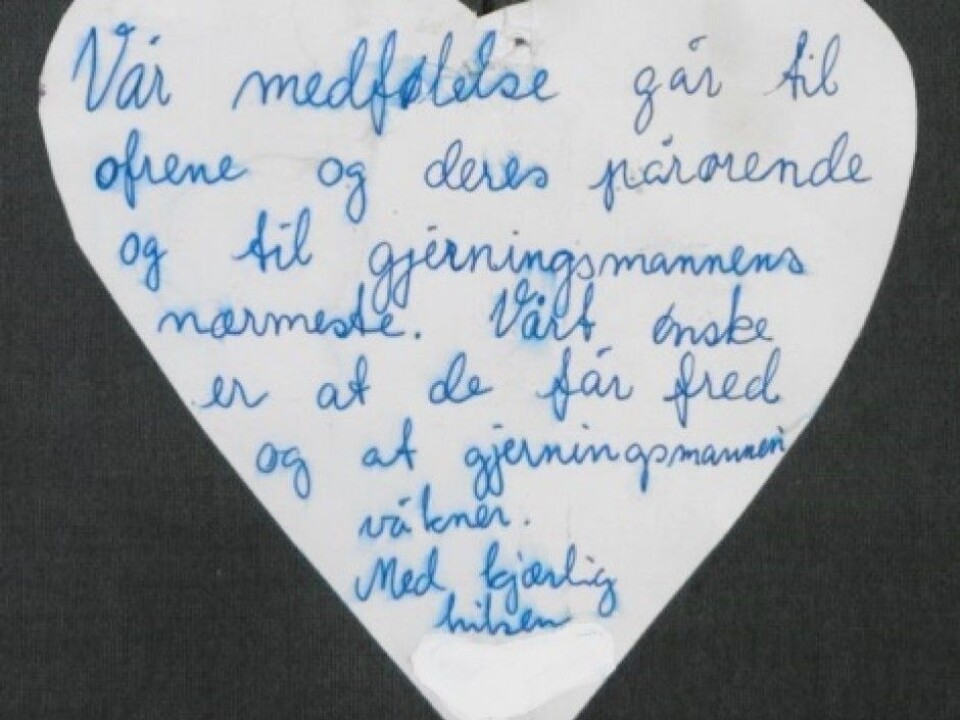
According to Lied, these drawings indicate values that are perceived as threatened in Norwegian society. “We see a dehumanized Breivik in these drawings, a personification of the devil. He represents a threat to values like life and dignity,” she says.
Using the memory material to promote values
The "purpose" clause in Norway’s Education Act states that schools shall impart values, but not influence children to follow a particular religion. Key values in the purpose clause are equality, democracy, solidarity and respect for human dignity.
Lied finds that it is often difficult to find good examples to use in discussing values in schools.
She notes that the values made explicit in the school purpose clause are the very values that children have deemed important through their 22 July drawings.
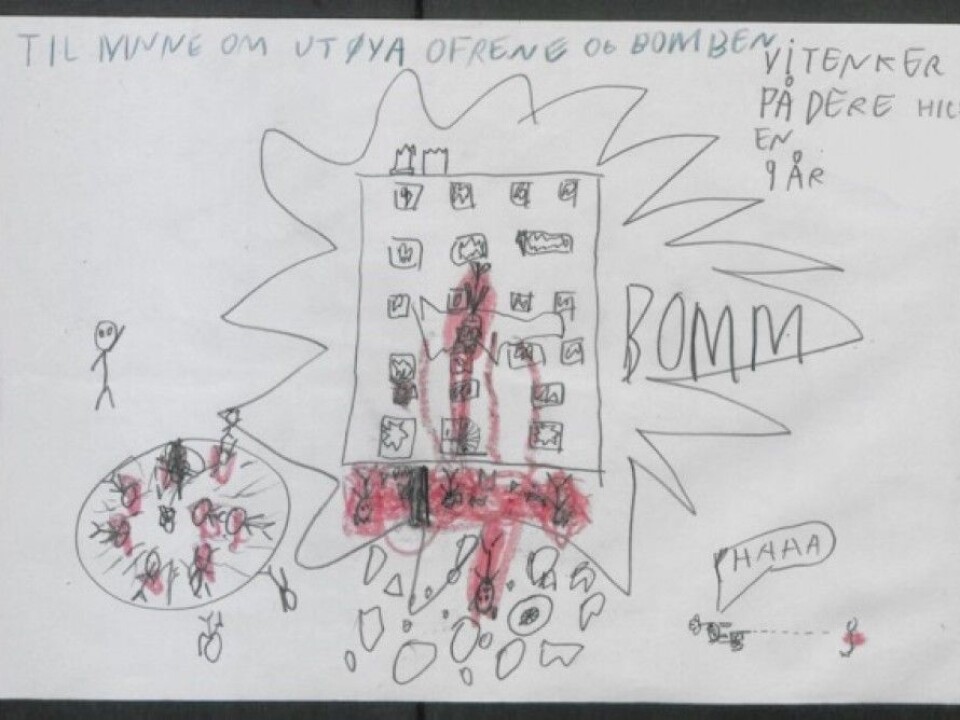
“Therefore, we can perhaps say that Norwegian society, including schools, have succeeded in conveying this set of values to kids,” Lied says. “The memory material may help teachers find further relevant examples for values discussions — both those we believe are important and those that are threatened.”
The digitized memory material is administered by the National Archives Services of Norway.
-----------------------------------------------
Read the Norwegian version of this article at forskning.no

Translated by: Nancy Bazilchuk









